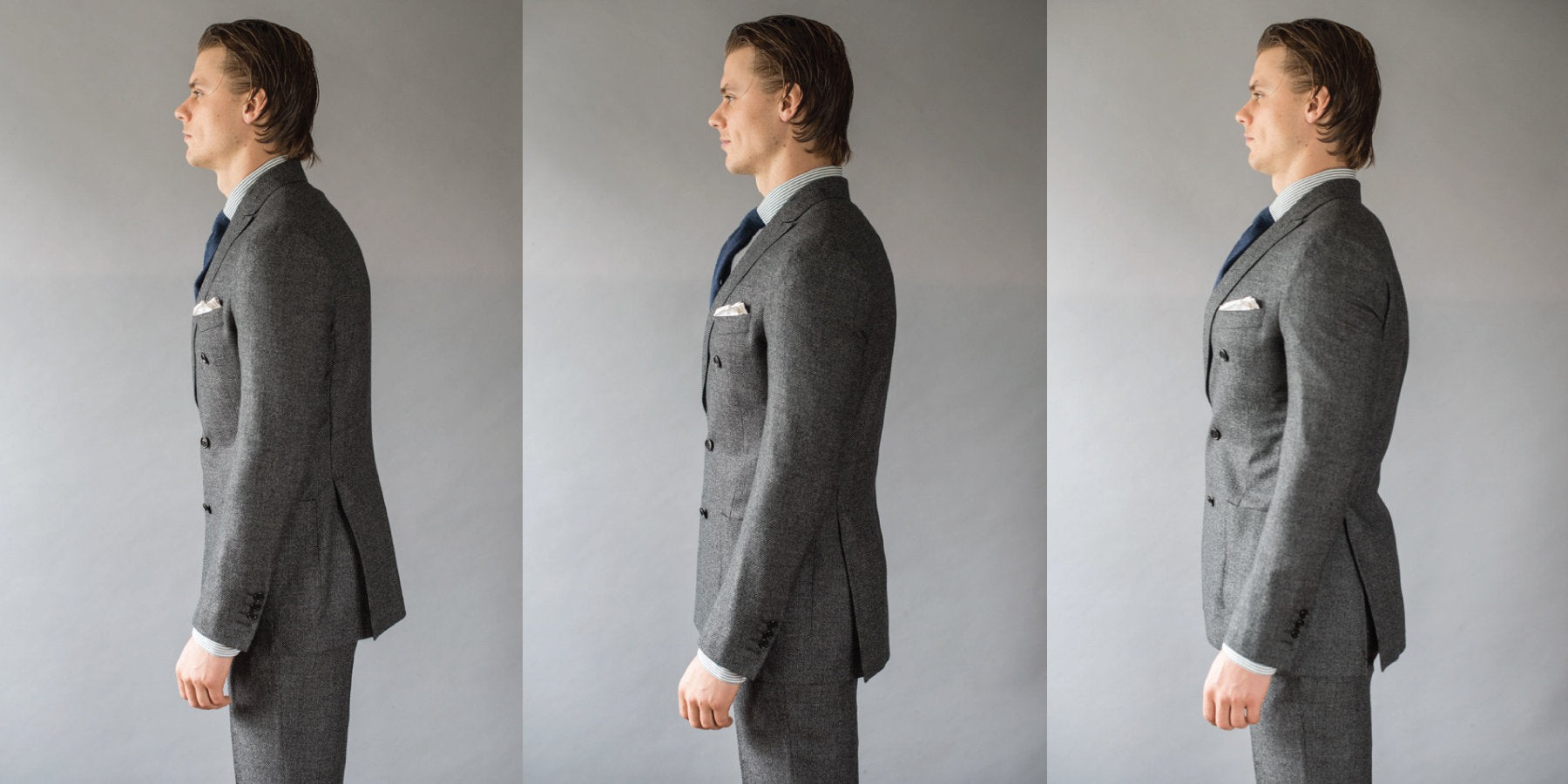Good morning,
Today we’re taking a closer look at posture adjustments, which are foundational to bespoke fittings because they affect every piece of the garment and they can be difficult (or impossible) to recut post-production.
PROPER POSTURE ADJUSTMENT
Will has great posture. He’s slightly erect, but very has a very close to “normal” balance. This charcoal birdseye jacket has already been adjusted for his posture, as you can see by the clean drape of the garment.
What we look for here is the collar of the jacket sitting snugly against the collar of the shirt, a smooth upper back line, a clean sleeve pitch, and most importantly, the bottom hem of the jacket being straight and perpendicular to the floor (not higher in the front or the back).
“STOOPING” POSTURE ISSUES
A client with head-forward (slouching) posture (or an overly large back, as seen on some athletes and body builders) typically causes the back of the jacket to “lift”, the vents to swing open and the seat to “wave”.
The pattern adjustment here is to lengthen the back of the jacket through the middle to give it enough radiance so that the collar reaches the neck and the bottom of the jacket can cover the seat, laying flat. Unfortunately, this adjustment is virtually impossible to perform on an off-the-rack (or already cut) garment.
Many clients with head-forward posture also have a collar gap issue. Part of this “stooping” posture adjustment raises the collar to sit forward on the neck as well.
Here’s a close-up of the seat “wave effect” common on clients with stooping posture:
“ERECT” POSTURE ISSUES
A client with erect posture has the opposite fit problems. The back of the jacket is longer (lower) than the front, which causes the lower back of the jacket to land on the top of the seat, causing a “pooling of fabric” at the low back.
Guys with erect posture also often stand with their shoulders back (chest open). This can cause the lapels to “pop” off the front chest, as well as cause extra fabric to pool around the shoulder blades in the back.
The pattern adjustment here is to shorten the back of the jacket through the middle so that the bottom hem and vents lay smooth and flat, take-in the half-back slightly, and send additional radiance to the front chest.
That's all for today.
I hope this helps answer some questions about why/how we use a “fit assessment garment” to create the final pattern(s) for each of our clients. Keep in mind that this is only one of hundreds of “checks” that our team of tailors perform for each client, and they are almost always used in combination with other adjustments, all depending on the particular needs of the client.
Thanks, as always, for reading.
Yours in style,
Dan Trepanier

